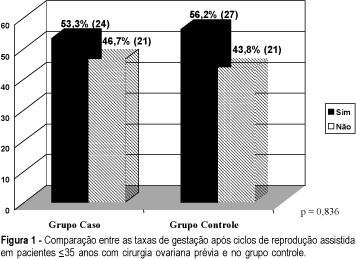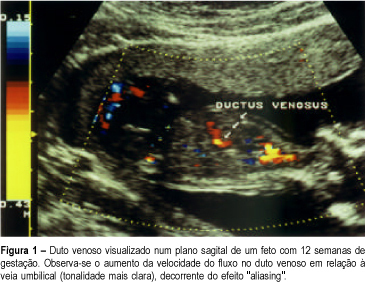Summary
Revista Brasileira de Ginecologia e Obstetrícia. 1998;20(1):37-43
DOI 10.1590/S0100-72031998000100007
We conducted a prospective cross-sectional study to evaluate the accuracy of the breast self-examination (BSE) in the detection of palpable breast lumps and the relation to its frequency of performance. Two thousand six hundred and seventy two women who have had a mammogram in a private clinic in Vale dos Sinos-RS between January 1994 and July 1997 were asked about BSE performance frequency. They were divided in two groups: group I (monthly), group II (almost never). The women who referred performing BSE on a occasional basis were excluded from the main analysis. The woman was asked wheter she or her physician had palpated something in her breasts. The patient's BSE findings were compared with those of her physician (based on the patients' report). The sensitivity of the BSE was higher in group I compared to group II (57.4% versus 33.3%; rho<0.05). We concluded that there is an association between frequency of performance and sensitivity of BSE to detect breast lumps.
Summary
Revista Brasileira de Ginecologia e Obstetrícia. 1999;21(7):370-370
Summary
Revista Brasileira de Ginecologia e Obstetrícia. 2007;29(7):370-375
DOI 10.1590/S0100-72032007000700008
Studies have shown possible risk relations among oral illnesses, mainly periodontal disease and adverse pregnancy outcomes, such as prematurity, low birth weight and preeclampsia. The explanation for this hypothesis is based on the fact that periodontal disease is an infectious state, which may increase maternal serum cytokines through the release of such agents directly from the periodontal pocket or by through the dissemination of pathogenic bacteria, inducing systemic production. This assumption is based on the knowledge that the physiopathology of the pregnancy complications cited above is associated with the presence of some cytokines in the maternal serum. The present study work has the objective to review literature in search of evidence to these alleged associations. Although a number of clinical studies have been found in this review, we noticed a lack of methodological standards, what limits the conclusions about this topic. On the other side, the fact that periodontal disease is not yet a confirmed risk factor for adverse pregnancy outcomes does not reduce the importance of oral health maintenance during pregnancy, since it is important to allow adequate feeding without pain and bleeding in order to maintain an adequate nutritional supply.
Summary
Revista Brasileira de Ginecologia e Obstetrícia. 2023;45(7):371-376
To compare cesarean section (CS) rates according to the Robson Ten Group Classification System (RTGCS) and its indications in pregnant women admitted for childbirth during the first wave of the coronavirus disease 2019 (COVID-19) pandemic with those of the previous year.
We conducted a cross-sectional study to compare women admitted for childbirth from April to October 2019 (before the pandemic) and from March to September 2020 (during the pandemic). The CSs and their indications were classified on admission according to the RTGCS, and we also collected data on the route of delivery (vaginal or CS). Both periods were compared using the Chi-squared (χ2) test or the Fisher exact test.
In total, 2,493 women were included, 1,291 in the prepandemic and 1,202 in the pandemic period. There was a a significant increase in the CS rate (from 39.66% to 44.01%; p = 0.028), mostly due to maternal request (from 9.58% to 25.38%; p < 0.01). Overall, groups 5 and 2 contributed the most to the CS rates. The rates decreased among group 1 and increased among group 2 during the pandemic, with no changes in group 10.
There was an apparent change in the RTGSC comparing both periods, with a significant increase in CS rates, mainly by maternal request, most likely because of changes during the pandemic and uncertainties and fear concerning COVID-19.
Summary
Revista Brasileira de Ginecologia e Obstetrícia. 2002;24(6):371-376
DOI 10.1590/S0100-72032002000600003
Purpose: to evaluate the effect of previous ovarian surgery for endometriosis on the ovarian response in assisted reproduction treatment cycles and its pregnancy outcome. Methods: a total of 61 women, with primary infertility and previous ovarian surgery for endometriosis, submitted to 74 in vitro fertilization/intracytoplasmic spermatozoid injection (IVF/ICSI) cycles, were studied (study group). A further 74 patients with primary infertility who underwent 77 IVF/ICSI cycles within the same period of time, at the same clinic and without previous ovarian surgery or endometriosis were studied as control group. Patients were matched for age and performed treatment. The groups were compared regarding number of ampoules used for superovulation, duration of folliculogenesis, number of follicles, number of oocytes, fertilization and pregnancy rate. IVF started with long protocol GnRHa for pituitary suppression followed by superovulation. After oocyte collection, in vitro insemination or sperm injection was performed and embryos were transferred from day 2 to day 5. Results: patients <35 years with previous ovarian surgery had less oocytes retrieved than the patients of the control group (p=0.049). Number of ampoules used for superovulation, duration of folliculogenesis, number of follicles, and fertilization rate were similar in both groups. The same was observed for pregnancy rates, as 24 patients (53.3%) with previous ovarian surgery and 27 (56.2%) of the control group became pregnant. Patients >35 years with previous ovarian surgery needed more ampoules for superovulation (p=0.017) and had less follicles and oocytes than women of the control group (p=0.001). Duration of folliculogenesis was similar in both groups, as was fertilization rate. A total of 10 patients achieved pregnancy in the study group (34.5%) and 14 (48.3%) in the control group. Conclusion: ovarian surgery for endometriosis reduced the ovarian outcome in IVF/ICSI cycles in women >35 years old, and might also decrease pregnancy rates. Therefore, we believe that for infertile patients, a conservative treatment might be a better option to avoid the reduction of ovarian response.

Summary
Revista Brasileira de Ginecologia e Obstetrícia. 2001;23(6):371-376
DOI 10.1590/S0100-72032001000600005
Purpose: to evaluate the results of the first 104 hysteroscopic polypectomies in a teaching hospital. Methods: a retrospective descriptive study was designed. Medical records of the first 136 operative hysteroscopies - 104 of which polypectomies - were reviewed. Patient characteristics such as age, parity, period of reproductive function and symptoms; number and size of polyps and results concerning complications and symptom relief were evaluated. Results: the average age of patients was 52.7 years. Three quarters of them were multiparous. Fifty-seven percent of the patients were menopaused. About half of the patients had symptoms related to polyps. Abnormal bleeding was the most frequent symptom (47.1%). In 16.3% of the patients more than 1 polyp were detected and 84% of the polyps were larger than 1 cm. The only immediate complication was a uterine perforation. Late complications were rare and mild. The follow-up period was 9 months on average. In 82% of teh patients the symptoms were controlled. Hysterectomy was necessary in 8.2% of the patients, all of them with other uterine diseases such as leiomyomas, adenomyosis and atypical endometrial hyperplasia in one patient). Conclusion: hysteroscopic polypectomy is a simple, safe and effective method for the treatment of endometrial polyps. Selection of patients must be rigorous to avoid further operative procedures.
Summary
Revista Brasileira de Ginecologia e Obstetrícia. 1999;21(7):371-376
DOI 10.1590/S0100-72031999000700002
Purpose: to evaluate the possible value of pulsed and color Doppler of ductus venosus blood flow in the screening for chromosomal abnormalities at 10-14 weeks of gestation. Methods: the ductus venosus flow velocity waveforms and the nuchal translucency (NT) thickness were obtained immediately before the chorionic villus sample in 26 pregnancies. We employed the following criteria for the suspicion of chromosomal defects: reverse or absent flow during atrial contraction and NT greater or equal to 3 mm. We calculated the sensitivity, the specificity, the negative and positive predictive value for each of the above items. Results: there were 9 chromosomal abnormalities (3 cases of trisomy 21, 2 cases of trisomy 13, 1 case of trisomy 9, 1 case of trisomy 22, 1 triploidy and 1 monosomy X). Abnormal ductus venosus flow was observed in all cases (sensitivity of 100%). In the normal fetuses (17 cases) only 1 had abnormal flow (specificity of 94%). Concerning NT, the sensitivity and the specificity were 88% and 76%, respectively. Conclusion: our preliminary results suggest that the presence of chromosomal abnormalities may be strongly suspected when an increased NT thickness is associated with an absent or reverse flow in the ductus venosus. We speculated that both methods are valid in the screening of chromosomal defects.
